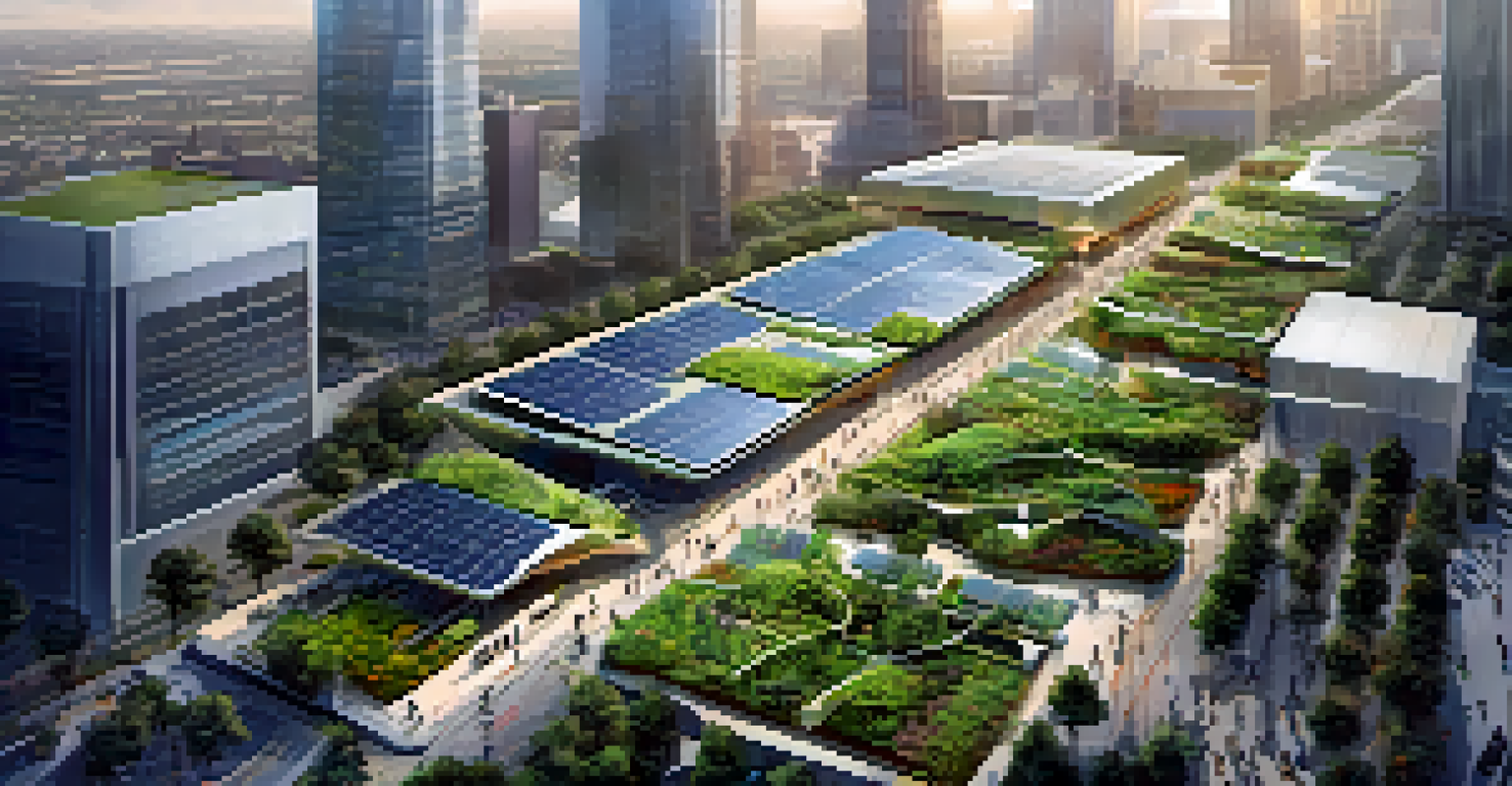The Evolution of Dallas Local Government: A Historical Overview

The Early Days: Formation of Dallas Government
Dallas was officially incorporated in 1856, marking the beginning of its local governance. The early government was simple, reflecting the small population and limited resources of the time. Initially, a mayor and a handful of council members managed the city's affairs, focusing primarily on basic infrastructure and public safety.
A government that is afraid to trust its people is a government that has lost its way.
As the city began to grow, so did the need for a more structured form of government. By the late 19th century, Dallas had established a police force and fire department, showcasing a shift towards organized public services. This growth laid the groundwork for more complex governance structures in the years to come.
Throughout these formative years, the local government faced challenges typical of burgeoning cities, such as managing rapid population growth and economic development. These early experiences shaped the foundations of Dallas's governance, which would continue to evolve alongside the city itself.
The 20th Century: Expansion and Reform
The early 1900s brought significant changes to Dallas’s local government as the city entered a period of rapid expansion. The population surged due to the booming economy, and the city recognized the need for reforms to accommodate this growth. The introduction of the city manager system in 1907 marked a pivotal change, allowing for more efficient administration.

During this time, Dallas also faced social and political challenges, including issues related to segregation and civil rights. These challenges prompted local leaders to advocate for reforms that would eventually lead to greater equity in governance. The push for change was evident, as citizens began to demand more transparency and accountability from their elected officials.
Dallas Government's Early Formation
Dallas's local government began in 1856, evolving from a simple structure to a more organized system to address the needs of a growing population.
By the mid-20th century, the local government had established various departments to address the needs of a diverse population. This included areas such as parks, public health, and urban planning, showcasing a shift towards a more comprehensive approach to city management.
Civil Rights Movement: Impact on Local Governance
The Civil Rights Movement of the 1960s significantly impacted local government in Dallas, as activists pushed for racial equality and justice. This movement spurred changes in policies and practices that had long marginalized communities of color. Local leaders found themselves at a crossroads, having to balance the demands for change with the existing governance structures.
The best way to predict the future is to create it.
In response to pressure from activists and concerned citizens, the Dallas local government began to implement policies aimed at desegregation and improved community relations. This included the establishment of the Fair Housing Ordinance in 1968, which sought to combat discrimination in housing. These changes were crucial in reshaping the relationship between the government and its constituents.
Despite these advancements, challenges remained, and the struggle for equality continued. The local government had to navigate these complexities while striving to unify a city that was increasingly diverse in population and perspectives.
Economic Shifts: Adapting Local Governance
The economic landscape of Dallas underwent significant shifts in the late 20th century, particularly with the rise of the technology and finance sectors. These changes necessitated adjustments in local governance to better support economic development and attract businesses. The government introduced initiatives aimed at fostering growth and innovation within the city.
With new industries emerging, local leaders recognized the importance of investing in education and infrastructure. This led to partnerships between the government and private sector, focusing on workforce development and urban renewal projects. Such collaborations were essential in positioning Dallas as a competitive player in the national economy.
Civil Rights Movement's Influence
The Civil Rights Movement of the 1960s prompted significant policy changes in Dallas, aiming to enhance racial equality and improve community relations.
However, these economic advancements also brought challenges, such as income inequality and housing affordability. The local government had to address these issues while continuing to promote growth, illustrating the delicate balancing act inherent in effective governance.
Modern Governance: Challenges and Innovations
In the 21st century, Dallas faces a myriad of challenges that test the resilience of its local government. Issues such as population growth, public transportation needs, and climate change require innovative solutions and proactive governance. The city has embraced technology, utilizing data-driven approaches to enhance public services and improve community engagement.
Moreover, the local government has prioritized transparency and accountability, recognizing that public trust is essential for effective governance. Initiatives such as open data platforms and community forums aim to involve citizens in decision-making processes. This shift towards inclusivity reflects a broader trend in modern governance.
Despite these advancements, Dallas continues to grapple with longstanding issues, including social inequality and access to resources. Addressing these challenges requires ongoing collaboration between government officials, community leaders, and residents to ensure that all voices are heard in shaping the future of the city.
Community Engagement: A New Era in Governance
Community engagement has become a cornerstone of local governance in Dallas, with officials recognizing the value of citizen participation. This shift has led to the implementation of programs designed to empower residents and encourage feedback on local policies. By fostering an open dialogue, the government aims to build trust and strengthen community ties.
One notable initiative is the Dallas City Hall's Citizen Engagement Program, which invites residents to participate in discussions about city projects and priorities. This approach not only informs decision-making but also creates a sense of ownership among citizens. When people feel their voices matter, the result is often more effective governance.
Emphasis on Community Engagement
Modern governance in Dallas prioritizes community engagement, fostering citizen participation to ensure that the local government remains responsive to residents' needs.
As Dallas continues to grow and evolve, the importance of community engagement will only increase. The local government must remain committed to listening to its constituents and adapting to their needs, ensuring that the city's future is shaped by those who live and work within it.
Looking Ahead: The Future of Dallas Local Government
As we look to the future, the evolution of Dallas local government will hinge on its ability to adapt and innovate. With emerging challenges like climate change and economic disparities, the government must remain proactive in its approach. This requires a willingness to embrace new ideas and technologies that can improve city services and quality of life.
Moreover, a focus on sustainability and resilience will be crucial in shaping Dallas's future governance. Initiatives aimed at reducing the city's carbon footprint and enhancing green spaces will not only benefit the environment but also improve public health and community well-being. A forward-thinking approach will be essential in addressing the needs of a growing and diverse population.

Ultimately, the future of Dallas local government lies in its commitment to inclusivity and collaboration. By continuing to engage with residents and fostering a culture of transparency, the city can build a governance model that reflects the values and aspirations of its community, paving the way for a brighter future.